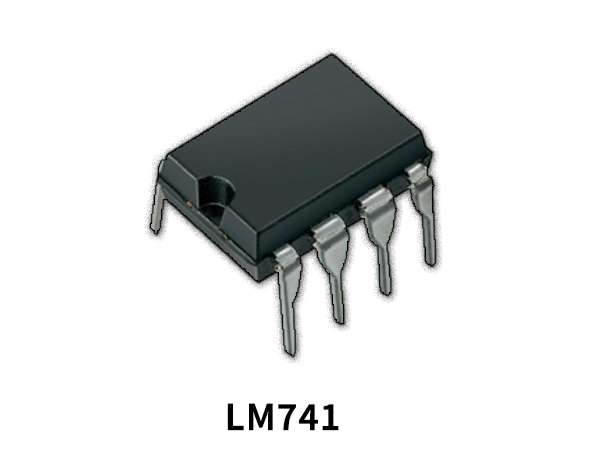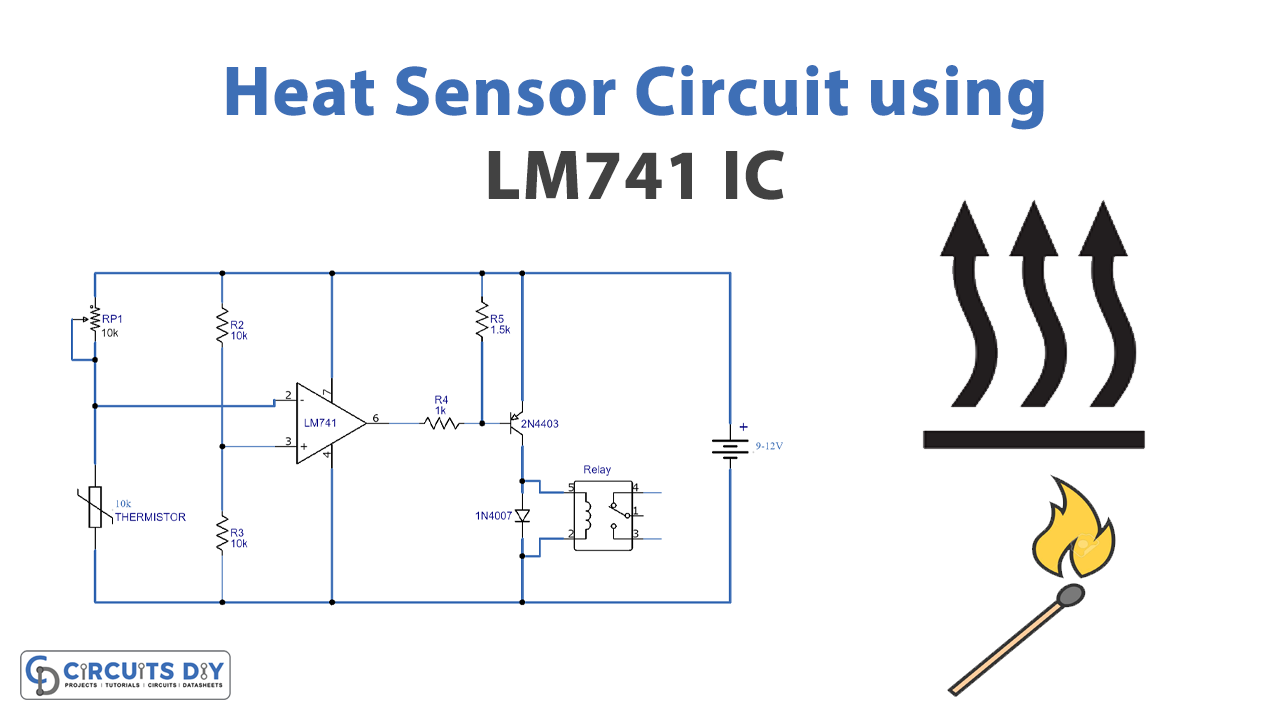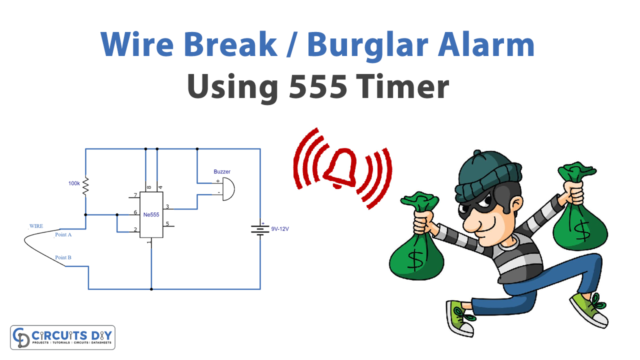In this tutorial, we are making an efficient and useful project of heat sensor with LM741 IC. It activates a relay switch on the level that can be set beforehand according to your desired level of temperature or heat. You can connect any load with this relay and operate it through this circuit. For example, if you can just connect a fan and it will turn on when it gets too hot. This is just one example but there are a lot of applications where this circuit can be used.
This temperature sensor circuit is very easy to build and uses only a few easily available components like an op-amp IC LM741, a PNP transistor, relay, thermistor, variable resistor, and some resistors.

Hardware Components
The following components are required to make Heat Sensor Circuit
| S.no | Component | Value | Quantity |
|---|---|---|---|
| 1. | Thermistor | 10K | 1 |
| 2. | Resistor | 10K, 1.5K, 1K | 2, 1, 1 |
| 3. | IC | LM741 | 1 |
| 4. | Transistor | 2N4403 | 1 |
| 5. | Relay | – | 1 |
| 6. | Diode | 1N4007 | 1 |
| 7. | Input Supply DC | 9-12V | 1 |
| 8. | Variable Resistor | , 10K | 1 |
LM741 Pinout

For a detailed description of pinout, dimension features, and specifications download the datasheet of LM741
Heat Sensor Circuit

Working Explanation
The operating voltage of this circuit is 9 to 12 volts DC. When the thermistor senses heat or temperature, the circuit is activated. The voltage is passed through the IC which amplifies the signal that goes into the transistor. We are using a PNP transistor in this circuit that is working as a switch. This will activate the relay and whatever load connected with the relay will activate as well. To select the required level of heat on which the relay should be activated can be achieved by adjusting the 10K variable resistor.
For more accuracy, you can experiment with other values of the thermistor and variable resistor like 50K, 100K, 500K, etc. Make sure to use the relay of the same voltage as the input voltage of the circuit.
Applications and Uses
This circuit can be used in a wide range of applications as a heat switch to activate any electronic load or device such as a fan. Or you can also use it as a temperature alarm circuit.













